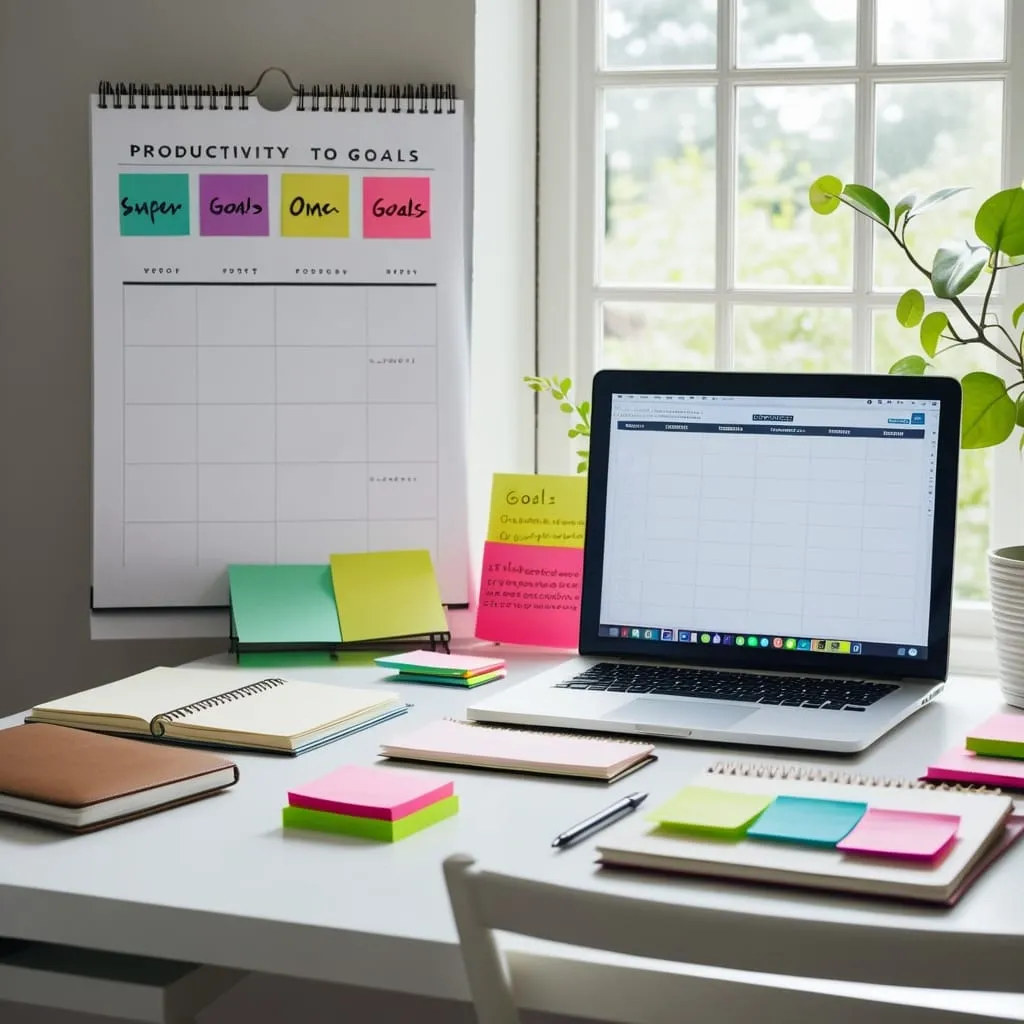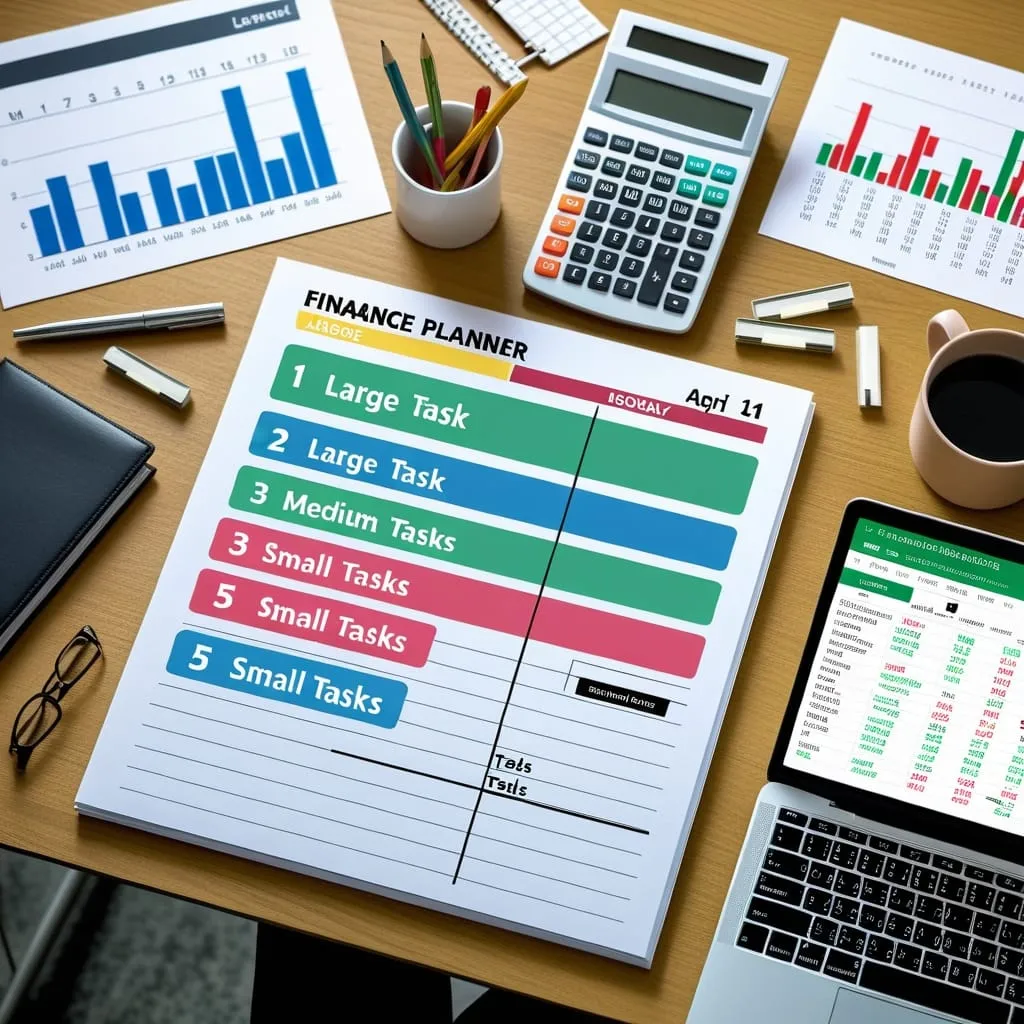Crafting Your Perfect Productivity System: A Journey to Efficiency
Ever feel like you're running on a hamster wheel, busy all day but not really getting anywhere? You're not alone. In today's fast-paced world, staying productive can feel like a constant battle. But here's the thing: productivity isn't about doing more. It's about doing what matters, efficiently.
Let's dive into how you can build a productivity system that actually works for you. No cookie-cutter solutions here - we're talking about a tailored approach that fits your unique lifestyle and goals.
First things first, let's talk goals. What do you really want to achieve? Maybe it's saving for a house, learning a new skill, or finally writing that novel. Whatever it is, get crystal clear on it. These big-picture goals are your North Star, guiding every decision you make.
Now, let's get real about where your time's going. We all have those productivity black holes - you know, like falling into a social media rabbit hole when you should be working on that report. Take a few days to track everything you do. And I mean everything. You might be surprised (or horrified) at what you find.
Once you've got a handle on where your time's going, it's time to wrangle those tasks. Find a way to capture every to-do that pops into your head. Maybe you're a digital junkie who loves apps like Trello or Asana. Or perhaps you're old school and prefer a trusty notebook. The method doesn't matter as long as it works for you.
But here's the kicker: not all tasks are created equal. You've got to prioritize. Ever heard of the Eisenhower Matrix? It's a fancy name for a simple concept. Divide your tasks into four categories: urgent and important, important but not urgent, urgent but not important, and neither urgent nor important. Focus on the first category, then work your way down.
Now, let's talk about your most precious resource: energy. You could have all the time in the world, but if you're running on fumes, you're not going to get much done. Pay attention to when you're at your best. Are you a morning person or a night owl? Schedule your most important tasks when you're at your peak.
And speaking of schedules, they're not just for your calendar. Create a daily routine that sets you up for success. Maybe it's meditation in the morning, a walk at lunch, and no screens after 9 PM. Whatever works for you. The key is consistency.
But let's be real - life happens. Your perfect schedule will get thrown off track sometimes. That's why flexibility is key. Build in some buffer time for those unexpected curveballs life loves to throw.
Now, here's where things get personal. Your productivity system needs to evolve with you. Set aside time each week to review what's working and what's not. Maybe that new app isn't all it's cracked up to be, or you've realized you're more productive working in short bursts rather than long stretches. Adjust accordingly.
Remember, simplicity is your friend. Don't overcomplicate things with a million different tools and techniques. The best system is one you'll actually use. Start small and build from there.
Think of building your productivity system like a science experiment. Try different approaches, see what works, and ditch what doesn't. Maybe time blocking is your jam, or perhaps the Pomodoro Technique (working in 25-minute sprints) is more your style. There's no one-size-fits-all solution.
Consistency is key, but don't expect perfection overnight. It takes time to form new habits. Start small - maybe it's reading for just 10 minutes a day or tackling your most important task first thing in the morning. As these habits become second nature, you can gradually level up.
And don't forget to celebrate your wins, no matter how small. Tracking your progress isn't just about identifying areas for improvement - it's also about motivating yourself. Seeing how far you've come can be a powerful boost when you're feeling stuck.
Building a productivity system that works for you is a journey, not a destination. It's about understanding your unique needs, habits, and goals. It's about creating a system that helps you manage your time, energy, and tasks efficiently, ensuring you achieve what you set out to do without burning out.
Remember, the goal isn't to become a productivity robot. It's about creating space in your life for what truly matters. Maybe that's spending more time with family, pursuing a passion project, or simply having the freedom to relax without feeling guilty.
So, where do you start? Begin by getting clear on your goals. What do you want your life to look like in a year? Five years? Ten years? Write it down. Make it vivid. This vision will be your guiding light as you build your productivity system.
Next, take a hard look at how you're currently spending your time. Keep a log for a week. Be honest with yourself. Are you really spending an hour scrolling through social media every night? No judgment - just awareness.
Once you have a clear picture of where your time is going, start capturing your tasks. Find a method that feels natural to you. Maybe it's jotting things down in a notebook, using a task management app, or even voice memos on your phone. The key is to get those tasks out of your head and into a system you trust.
Now comes the fun part - prioritizing. Not all tasks are created equal. Use the Eisenhower Matrix to categorize your tasks. Focus on what's both urgent and important first. Learn to say no to things that don't align with your goals.
Pay attention to your energy levels throughout the day. When do you feel most focused and productive? Schedule your most important tasks during these peak times. And don't forget to take breaks. Your brain needs time to recharge.
Create a schedule that works for you. Block out time for your most important tasks first, then fill in the gaps with less critical ones. But remember to be flexible. Life has a way of throwing curveballs, so build in some buffer time.
Make self-reflection a regular part of your routine. At the end of each day or week, take a few minutes to review what worked well and what didn't. Be honest with yourself, but also be kind. This isn't about beating yourself up - it's about continuous improvement.
Keep things simple. The best productivity system is one you'll actually use. Start with the basics and add complexity only if you need it. Think of it like a well-oiled machine - once it's set up, it should run smoothly with minimal effort.
Don't be afraid to experiment. Try different techniques and tools. Maybe time blocking works great for you, or perhaps you prefer a more flexible approach. The key is to find what feels natural and sustainable for you.
Consistency is crucial. Start small and build up. If you're trying to develop a new habit, start with just a few minutes a day. As it becomes more natural, you can gradually increase the time or complexity.
Finally, track your progress. This could be as simple as checking off completed tasks or as detailed as keeping a productivity journal. Seeing how far you've come can be incredibly motivating.
Remember, building a productivity system that works for you is a journey. It takes time, patience, and a willingness to adapt. But the payoff is worth it. Imagine a life where you're in control of your time, making progress on your goals, and still have energy left for the things you love.
So, are you ready to take control of your productivity? Start today. Pick one small thing you can do to improve your productivity and commit to it. Maybe it's setting your top three priorities for tomorrow before you go to bed tonight. Or perhaps it's blocking out 30 minutes of uninterrupted work time tomorrow.
Whatever you choose, remember this: the perfect productivity system is the one that works for you. So don't be afraid to make it your own. Here's to your journey towards a more productive, balanced, and fulfilling life!






